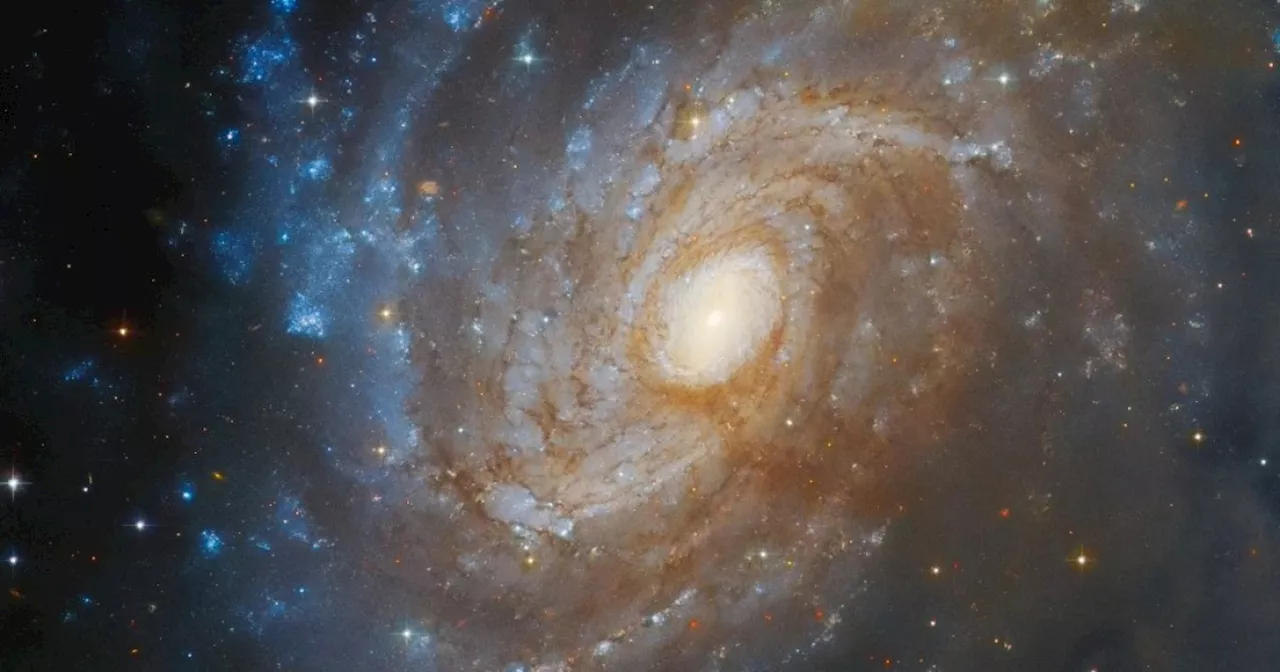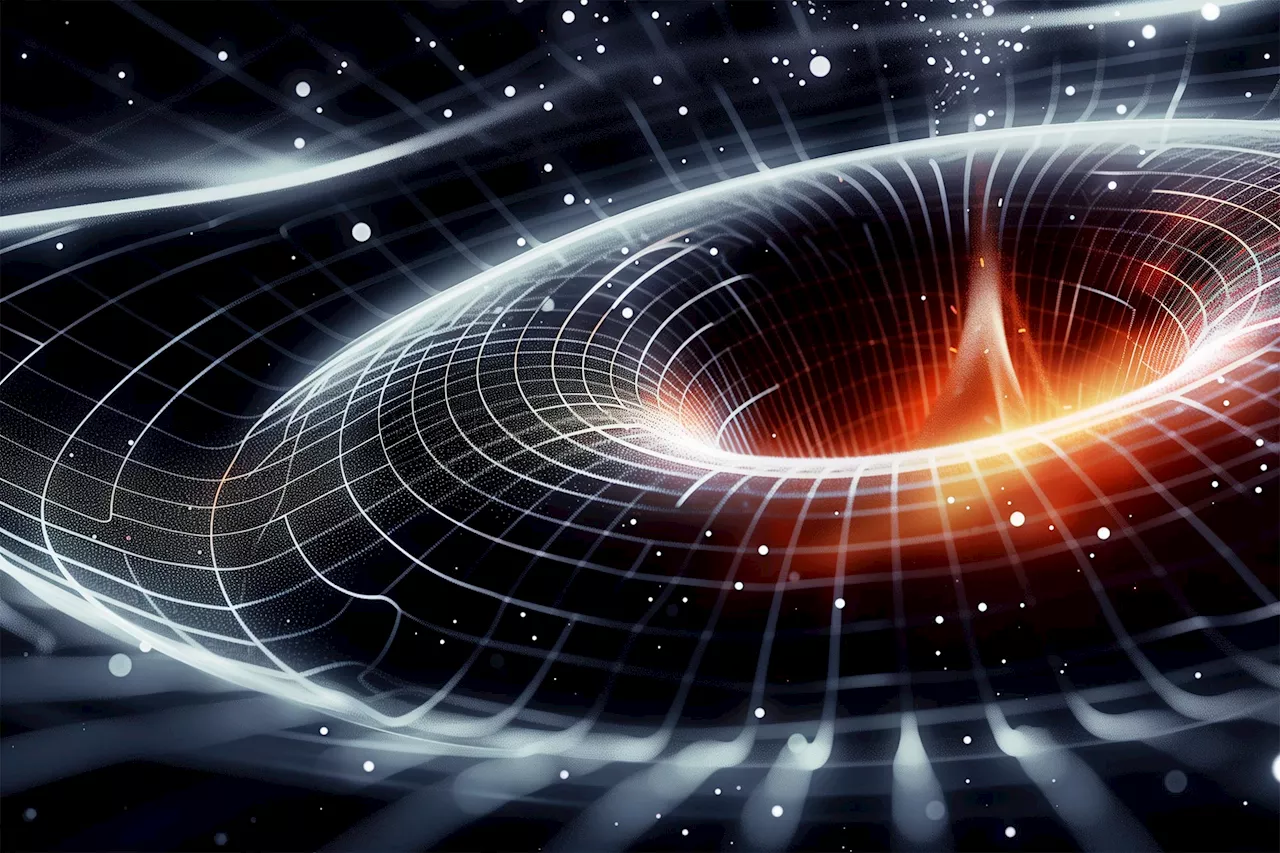Science, Space and Technology News 2024
This artist’s impression shows the formation of a gas giant planet embedded in the disk of dust and gas in the ring of dust around a young star. A University of Michigan study, led by U-M astronomer Gabriele Cugno, aimed the James Webb Space Telescope at a protoplanetary disk surrounding a protostar called SAO 206462, hoping to find a gas giant planet in the act of forming.
“Several simulations suggest that the planet should be within the disk, massive, large, hot, and bright. But we didn’t find it. This means that either the planet is much colder than we think, or it may be obscured by some material that prevents us from seeing it,” said Cugno, also a co-author on all three papers. “What we have found is a different planet candidate, but we cannot tell with 100% certainty whether it’s a planet or a faint background star or galaxy contaminating our image.
“When material falls onto the planet, it shocks at the surface and gives off an emission line at specific wavelengths,” Cugno said. “We use a set of narrow-band filters to try to detect this accretion. This has been done before from the ground at optical wavelengths, but this is the first time it’s been done in the infrared with JWST.”The University of Victoria paper, led by astronomy student Camryn Mullin, describes images of the disk surrounding the young star HL Tau.
“While there is a ton of evidence for ongoing planet formation, HL Tau is too young with too much intervening dust to see the planets directly,” said Jarron Leisenring, the principal investigator of thesearching for forming planets and astronomer at the University of Arizona Steward Observatory. “We have already begun looking at other young systems with known planets to help form a more complete picture.
“The lack of planets detected in all three systems tells us that the planets causing the gaps and spiral arms either are too close to their host stars or too faint to be seen with JWST,” said Wagner, a co-author of all three studies. “If the latter is true, it tells us that they’re of relatively low mass, low temperature, enshrouded in dust, or some combination of the three—as is likely the case in MWC 758.
United Kingdom Latest News, United Kingdom Headlines
Similar News:You can also read news stories similar to this one that we have collected from other news sources.
 A 'cosmic glitch' in gravity: New model may explain strange behavior on a cosmic scaleA group of researchers at the University of Waterloo and the University of British Columbia have discovered a potential 'cosmic glitch' in the universe's gravity, explaining its strange behavior on a cosmic scale.
A 'cosmic glitch' in gravity: New model may explain strange behavior on a cosmic scaleA group of researchers at the University of Waterloo and the University of British Columbia have discovered a potential 'cosmic glitch' in the universe's gravity, explaining its strange behavior on a cosmic scale.
Read more »
 Peering Into the Heart of Clouds: NASA’s CloudSat Wraps a Revolutionary JourneyScience, Space and Technology News 2024
Peering Into the Heart of Clouds: NASA’s CloudSat Wraps a Revolutionary JourneyScience, Space and Technology News 2024
Read more »
 Hubble spots a bright galaxy peering out from behind a dark nebulaA new image from the Hubble Space Telescope shows a galaxy partly hidden by a huge cloud of dust known as a dark nebula.
Hubble spots a bright galaxy peering out from behind a dark nebulaA new image from the Hubble Space Telescope shows a galaxy partly hidden by a huge cloud of dust known as a dark nebula.
Read more »
 Peering Into the Abyss: AI and Physics Unite to Unveil a Black Hole Flare in 3DScience, Space and Technology News 2024
Peering Into the Abyss: AI and Physics Unite to Unveil a Black Hole Flare in 3DScience, Space and Technology News 2024
Read more »
 NASA's CloudSat ends mission peering into the heart of cloudsCloudSat, a NASA mission that peered into hurricanes, tallied global snowfall rates, and achieved other weather and climate firsts, has ended its operations. Originally proposed as a 22-month mission, the spacecraft was recently decommissioned after almost 18 years observing the vertical structure and ice/water content of clouds.
NASA's CloudSat ends mission peering into the heart of cloudsCloudSat, a NASA mission that peered into hurricanes, tallied global snowfall rates, and achieved other weather and climate firsts, has ended its operations. Originally proposed as a 22-month mission, the spacecraft was recently decommissioned after almost 18 years observing the vertical structure and ice/water content of clouds.
Read more »
 NASA’s CloudSat Ends Mission Peering Into the Heart of CloudsOver the course of nearly two decades, its powerful radar provided never-before-seen details of clouds and helped advance global weather and climate
NASA’s CloudSat Ends Mission Peering Into the Heart of CloudsOver the course of nearly two decades, its powerful radar provided never-before-seen details of clouds and helped advance global weather and climate
Read more »
